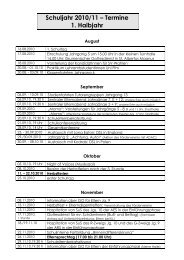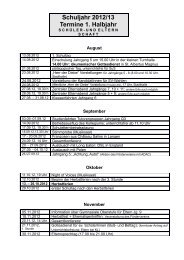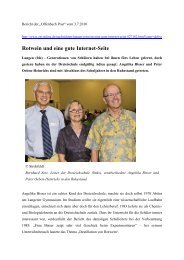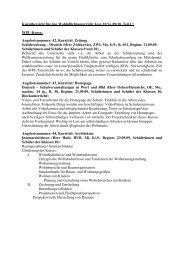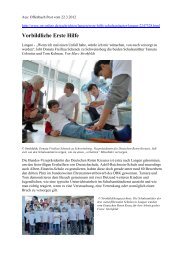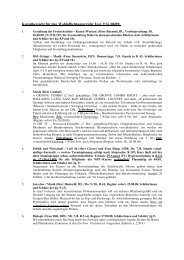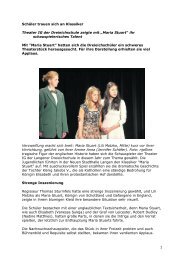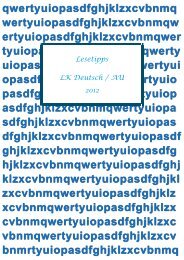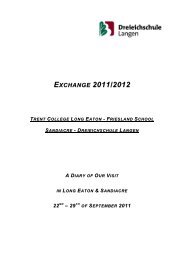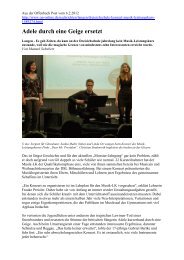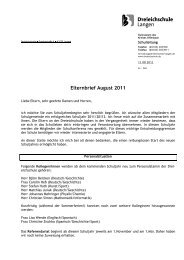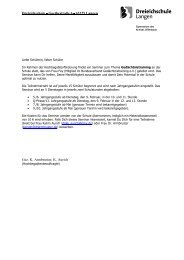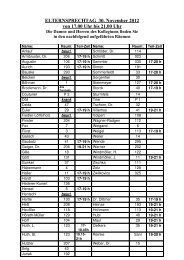brain
brain
brain
Erfolgreiche ePaper selbst erstellen
Machen Sie aus Ihren PDF Publikationen ein blätterbares Flipbook mit unserer einzigartigen Google optimierten e-Paper Software.
HOCHBEGABUNG UND SCHULE 99<br />
� Neisser, U. (Ed.)(1998). The rising curve. Long-term gains in IQ and related measures.<br />
Washington, DC: APA.**<br />
� Sternberg, R.J. & Williams, W.M. (Eds.)(1998). Intelligence, instruction and assessment:<br />
theory into practice. Mahwah, NJ: Erlbaum.**<br />
� Sternberg, R.J. (Ed.)(1999). Handbook of creativity. Cambridge: Cambridge University<br />
Press.**<br />
� Deary, I.J. (2000). Looking down on human intelligence. From psychometrics to the <strong>brain</strong>.<br />
Oxford: Oxford University Press.<br />
� Sternberg, R.J. (Ed.)(2000). Handbook of intelligence. Cambridge: Cambridge University<br />
Press.**<br />
� Deary, I.J. (2001). Intelligence: A very short introduction. Oxford: Oxford Univeristy Press.<br />
� Eysenck, H.J. (2001). Intelligence: A new look. New Brunswick: Transaction.<br />
� Houtz, J. (2003). The educational psychology of creativity. NJ: Hampton Press.<br />
� Nyborg, H. (Ed.)(2003). The scientific study of general intelligence: tribute to Arthur R.<br />
Jensen. Amsterdam: Pergamon Press.**<br />
� Sternberg, R.J., Lautrey, J. & Lubart, T.T. (Eds.)(2003). Modells of intelligence. International<br />
perspectives. Washington, DC: American Psychological Association.*<br />
� Wilhelm, O. & Engle, R.W. (Eds.)(2005). Handbook of understanding and measuring intelligence.<br />
Thousand Oaks, CA: Sage. **<br />
� Piirto, J. (2007). Talented children and adults: their development and education (3rd ed.).<br />
Prufrock Press.*<br />
Underachiever<br />
� Butler-Por, N. (1993). Underachieving gifted students. In Heller, K.A., Moenks, F.J. & Passow,<br />
A.H. (Eds.)(1993). International handbook of research and development of giftedness<br />
and talent. Oxford, England: Pergamon Press Ltd, 649–668.*<br />
� Ford, D.Y. (1996). Reversing underachievement among gifted black students. New York:<br />
Teachers College Press.*<br />
� Peters, W.A.M., Grager-Loidl, H. & Supplee, P. (2000). Underachievement in Gifted Children<br />
and Adolescents: Theory and Practice. In Heller, K.A., Moenks, F.J., Sternberg, R.J.<br />
& Subotnik, R.F. (Eds.)(2000). International handbook of giftedness and talent. Oxford,<br />
England: Pergamon Press Ltd, 609–621.*<br />
� Montgemery, D. (Ed.)(2000). Able underachievers. London: Whurr.<br />
� Montgemery, D. (2003). Gifted & talented children with special educational needs. Double<br />
Exeptionality. London: Fulton.*<br />
� Smutny, J.F. (2003). Underserved gifted populations. Creshill, NJ: Hampton Press.*<br />
Allgemeine Informationen zum Gesamtgebiet der Pädagogischen Psychologie<br />
� Rost, D.H. (2006). Handwörterbuch Pädagogische Psychologie (3., überarbeitete und<br />
erweiterte Auflage). Weinheim: PVU.*<br />
* = pädagogische. bzw. psychologische Vorkenntnisse erforderlich<br />
** = wissenschaftliche Literatur



